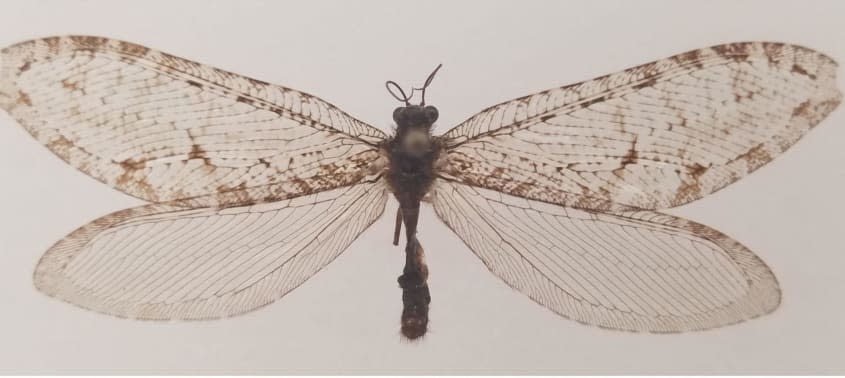Jurassic-era insect discovered at Arkansas Walmart
In 2012, Michael Skvarla, director of Penn State University's Insect Identification Lab, picked up what he thought was just an antlion — a fairly common flying insect — from the side of an Arkansas Walmart. But as it turns out, it was actually a Polystoechotes punctata, or giant lacewing, an insect from the Jurassic era.

Michael Skvarla / Penn State
Though once common, the giant lacewing "was mysteriously extirpated from eastern North America by the 1950s," according to a press release from Penn State. Skvarla's finding was the first of its kind in the past 50 years. Giant lacewing fossils date back to the Middle Jurassic era, over 160 million years ago. Fossil lacewing insects are also "much more abundant compared to living ones," per the authors of a 2018 study on lacewing fossil findings.
Scientists are still unsure why the insect disappeared, but have hypothesized that urbanization and habitat changes may have played a role. "Entomology can function as a leading indicator for ecology," Skvarla said. "The fact that this insect was spotted in a region that it hasn't been seen in over half a century tells us something more broadly about the environment."
Skvarla discovered he had misidentified the insect while teaching a Zoom class in 2020 when he noticed that the characteristics of antlions did not match up with the specimen he found. In 2022, he published his findings in the journal, Proceedings of the Entomological Society of Washington.
"This discovery suggests there may be relictual populations of this large, charismatic insect yet to be discovered," he said.
You may also like
Jurassic-era insect discovered at Arkansas Walmart
Why space experts want to establish a lunar time zone
The Dilbert debate: Were newspapers right to 'cancel' the cartoon?

